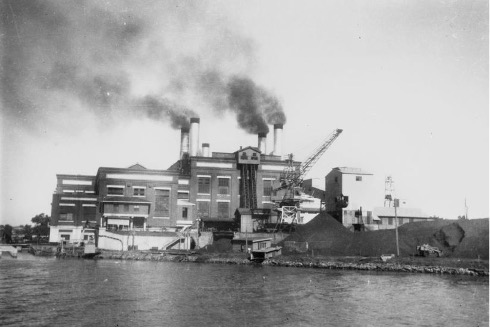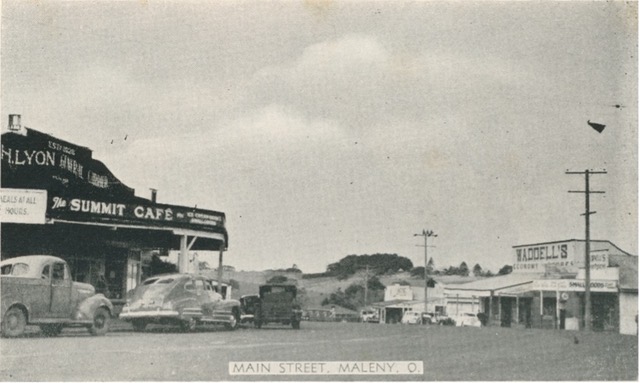Lighting Up The Range
by Gordon Plowman
For decades, residents of the Blackall Range depended on kerosene, candles and carbide for their lighting needs. They watched and waited as electricity lit the homes in Brisbane and also some of the larger country towns. Then, in 1927, the Nambour power house came on line. North Coast residents thought it may have sufficient capacity to supply surrounding towns and districts, but this was not to be. Its meagre 150 Kilowatt output limited supply to the town itself.
Right from the early days of settlement, interested parties had advocated for a hydro-electric scheme to be established at the Narrows Gorge on the Obi Obi Creek. As popular support for this idea snowballed, the Landsborough Shire engaged an engineer to investigate the possibility. His findings were released in January 1935 and it was not what the proponents expected. The engineer found that any such project would have a very limited electrical capacity and the costs would be prohibitive. Once again, their hopes were dashed but times were about to change for the best.
In 1936, a Royal Commission into Queensland’s electrical supply industry resulted in the establishment of the State Electricity Commission who were given the authority to rationalise Queensland’s electricity generation and distribution. One of their first decisions was for the electrification of south-east Queensland.
City Electric Light Company Limited, (CEL) was granted a franchise to extend its energy network which meant they now had the authority to supply electricity into country areas. These changes, coupled with the increased capacity of Brisbane power stations, brought about the possibility of bringing electrical energy to the North Coast.

The Powerhouse at New Farm brought power to Maleny and Montville
The CEL began construction of the high voltage aerial feeder lines from Brisbane to North Coast locations. It was no easy task erecting poles and wires over some of the most inaccessible country imaginable. Over creeks and gullies and deep ravines, over hills and through forest and scrub country, the line gangs worked with little assistance from machinery. Holes for power poles were dug by hand and they stood them up using nothing more than a truck and a set of sheerlegs. There were no cherry-pickers in those days and all pole work was performed from ladders.
The rugged landscape over which the cables traversed posed many problems for the erection teams. Extending the power lines up and along the Blackall Range meant that in places, the aerial cables had to bridge almost inaccessible deep valleys and gorges. The problem was solved by shooting the cables over by rocket. This excerpt from the Nambour Chronicle and North Coast Advertiser, dated 2 February1940, tells the story:
“…Last Wednesday some excitement was caused by the fact that a rocket with a wire attached was to be shot across the gorge from Peachester to McCarthy’s Lookout. Quite a few of the local residents assembled, and also members of the City Electric Light Co. from Brisbane. The first rocket fell short of the mark, but the second carried the wire to its set destination…”
Just one month later in March 1940, The Nambour Chronicle and North Coast Advertiser, detailing the rapid progression of the power lines, carried this report:
“Electricity Mains Nearing Montville
The progress of the establishment of electricity supply on the North Coast is making itself evident more and more every day.
A large gang of workmen of the City Electric Light Co. is busily engaged at Montville in the erection of the large poles which will carry the main supply lines. They are now erected as far as ‘Elston’ House, whilst the cables have been erected half-way across Montville from Maleny. It should not be many weeks before they are ready to connect up the residences on the front of the range from the bowling green to ‘Mayfield’ and on to Butt’s Road as far as Mr. J. Farrington’s residence.”
Maleny and Montville residents began being connected to the electricity grid in 1940. Building the artery-like network of poles and wires to extend the supply to farms and more remote areas took some time, especially considering the undulating nature of the terrain. These outlying consumers had to wait a little longer. Witta residents, for example, had to wait until 1946 and Flaxton until 1948.

Main Street, Maleny circa 1938 with power poles in place

 ©2016 Montville History Group. All rights reserved.
©2016 Montville History Group. All rights reserved.